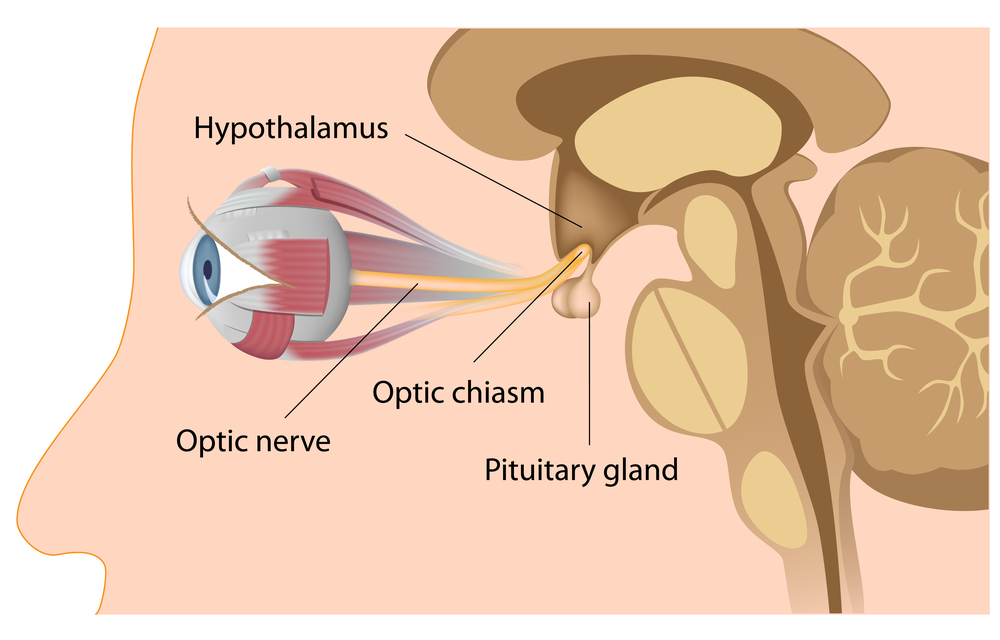Advancing Neurosciences on the Northshore
SURGEONS COLLABORATE ON NEW METHOD
TO REMOVE BRAIN TUMOR
This story appears in the Winter 2014 issue of Heart to Heart, which can be found online by clicking here.
 COVINGTON - Pituitary adenomas are benign tumors that develop in the pea-size pituitary gland in a small groove in the base of the brain.
COVINGTON - Pituitary adenomas are benign tumors that develop in the pea-size pituitary gland in a small groove in the base of the brain.
Historically, the tumors often were removed by surgery that involves tunneling through the inside of the mouth and septum of the nose to reach the tumor, behind the sinuses and adjacent to the brain.
The approach is effective, but can also cause considerable post-surgery swelling because it involves pushing back the patient’s face over the nose to reach the tumor.
In the summer of 2013, surgeons at St. Tammany Parish Hospital performed a minimally invasive endoscopic surgery for removing pituitary tumors that avoids cutting through the face or skull.
“There is far less trauma to the patient,” said Dr. Kevin McLaughlin ENT, who worked with neurosurgeon Dr. Richard Stanger during the delicate process.
The result is less pain and swelling of the face, no visible scarring and a faster recovery time for patients, said Dr. McLaughlin, an ear, nose and throat specialist on the Northshore and assistant professor at Louisiana State University medical school.
Minimal use of internal bandaging — or “packing” — is another advantage to patients. Endoscopy is also more likely to preserve the function of the pituitary gland than the traditional surgical approach, Dr. McLaughlin said.
Most pituitary tumors are benign, but patients with cancerous growths can begin radiation treatment almost immediately because they do not have to wait for incisions to heal.
Pituitary tumors are not uncommon. By some estimates, as many as 10 percent of people will develop a pituitary tumor over the course of their lifetime. Most go undiscovered because they do not cause any health problems.
Some pituitary tumors secrete excess hormones that cause symptoms from hormonal imbalances. But most are detected after they start to cause vision problems when the tumors press against the nearby optic nerve, Dr. Stanger said.
The endoscopic procedure’s minimally invasive impact is the result of technology that is both delicate and powerful. An endoscope is a straw-like lighted telescope equipped with a high-resolution camera, Dr. McLaughlin said.
“We are always looking for state of the art technology and equipment to help our surgeons provide more minimally invasive procedures,” said Nancy Ledet RN, director of surgical services. “With this procedure, the surgeons used our navigation system for endoscopic guidance to enhance the precise resection of the adenoma.”
Drs. McLaughlin and Stanger work as a team during the procedure. Dr. McLaughlin inserts the endoscope into a patient’s nostril and through the sinus to reach the adenoma. Dr. Stanger then removes the tumor.
Most patients can expect to stay overnight in the hospital after the surgery.
###
A full-service acute care facility committed to providing world-class healthcare and the latest technology, St. Tammany Parish Hospital delivers today’s life-improving procedures with the utmost care to area residents with emphasis on wellness, preventive care and disease management close to home. STPH is a self-supporting not-for-profit community hospital; it receives no tax funding. STPH.org